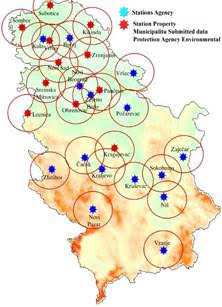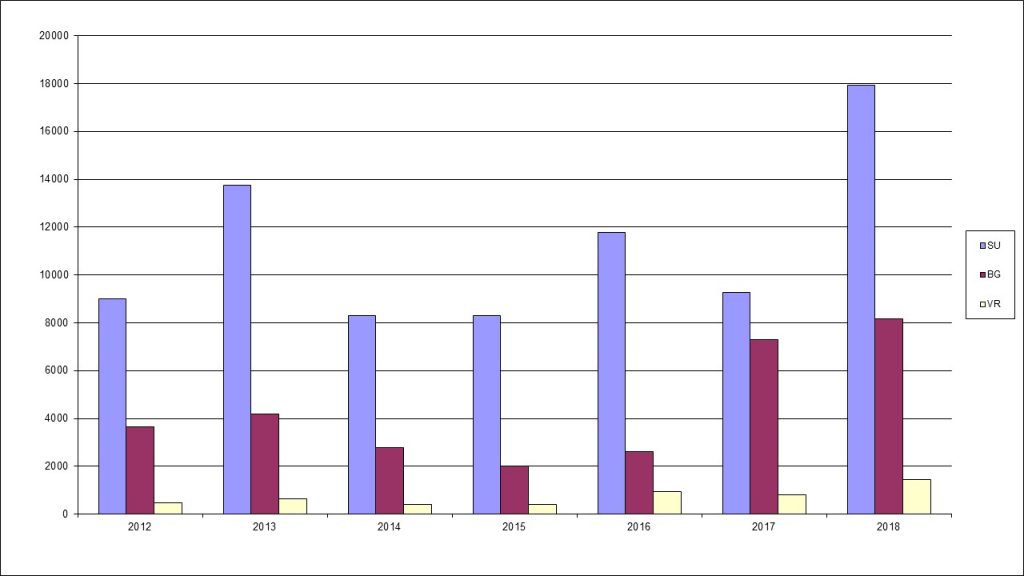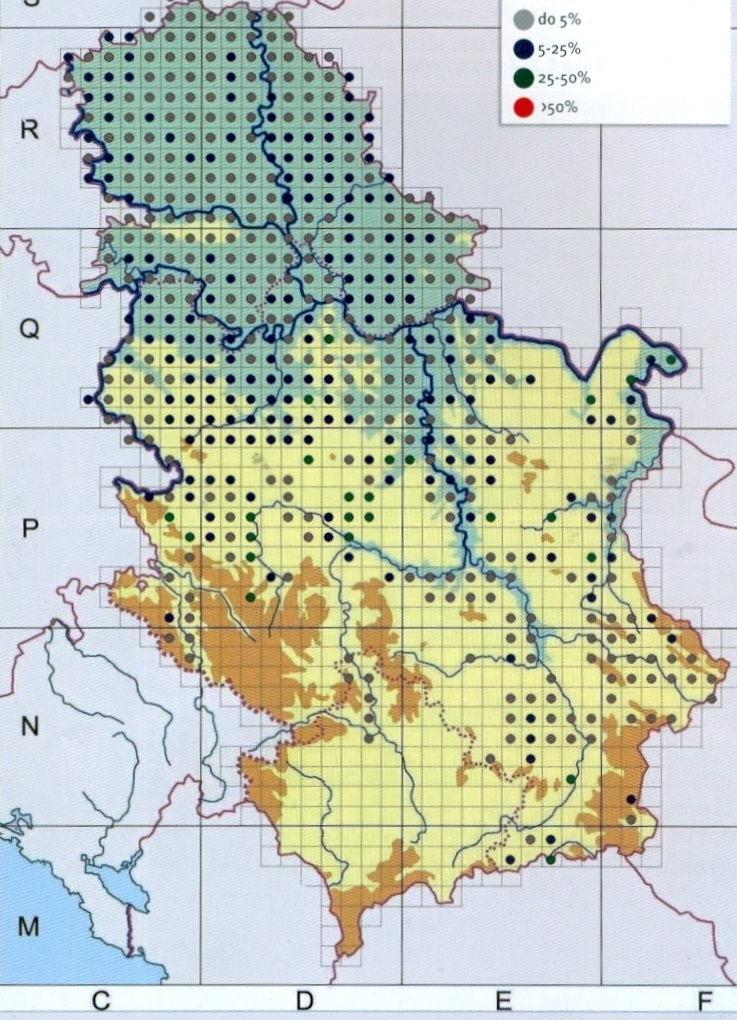Key message: Increase in the concentration of allergenic pollen of ambrosia from north to south of Serbia
Assessment: The data presented includes a period of seven years, monitored on three stations from the network: Subotica, Belgrade (Zeleno Brdo, ZB) and Vranje. The total quantities of pollen grains of the ambrosia were taken into account throughout the entire period of pollination. The analysis of data for the period from 2012 to 2018 has shown that the concentration of allergenic pollen of ambrosia is increasing in recent years. At the same time, geographic inequality of distribution is perceived as the total amount of this strongest allergen decreases from north to south. However, the quantity of pollen depends on several factors, such as geographic characteristics of the area, and can be significantly modified by meteorological and anthropogenic factors. Also, the amount of pollen depends on the agricultural region, in terms of that, Vojvodina is more expressed than the south of the country. The factor that should not be neglected is the mowing and the influence of the wind that carries the pollen at long distances. Subotica is on the border with Hungary in which ambrosia is extremely represented, despite numerous campaigns of suppression.
The first data in our country appeared in 1953, in Sremski Karlovci, Petrovaradin and Novi Sad. It is believed that ambrosia was brought to this area from Romania, most likely transported by the ships operating on the Danube. Later, these sites became centres from which Ambrosia artemisiifolia spread very aggressively throughout Vojvodina towards the south. It was also established in the vicinity of Belgrade in 1994 and further spread south to Paraćin and Niš, and several examples were also found in the Sićevačka gorge in 1999. It is widespread and expanding due to the great power of flexibility.


Indicator Name: Trend of concentration of allergenic pollen of Ambrosia (Ambrosia artemisiifolia) in Serbia
Institution/Author: Environmental Protection Agency/Ana Ljubičić
Use and interpretation:
Key question(s) which indicator helps to answer: How Ambrosia is spreading in Serbia?, What is he trend of concentration of allergenic pollen of Ambrosia in Serbia?
Use of indicator: To estimate occurance of Ambrosia in different parts of Serbia
Scale of appropriate use: Different parts of Serbia, rural, urban, suburban
Potential for aggregation:
Meaning of upward or downward trends: This indicator was monitored on three stations from the network: Subotica, Belgrade (Zeleno Brdo, ZB) and Vranje. The total quantities of pollen grains of the Ambrosia were taken into account throughout the entire period of pollination. The analysis of this indicator through these three stations in the period from 2012 to 2018 has shown that the concentration of allergenic pollen of Ambrosia is increasing in recent years.
Possible reasons for upward or downward trends: Geographic inequality of distribution is perceived as the total amount of this strongest allergen decreases from north to south. The quantity of pollen depends on several factors. It depends primarily on the biogeographic characteristics of the area. Quantities can be significantly modified primarily by meteorological and anthropogenic factors. Also, the amount of pollen depends on the agricultural region, which Vojvodina is distinguished with more than the south of the country. The factor that should not be neglected is the mowing and the influence of the wind that carries the pollen at long distances.
Implications for biodiversity management of change in the indicator: Ambrosia pollen air concentration change is used to monitor appearence and seasonal dynamic of Ambrosia in different pollen stations that are active in Serbia.
Units in which it is expressed: ha
Description of source data: The first data in our country appeared in 1953, in Sremski Karlovci, Petrovaradin and Novi Sad. It is believed that Ambrosia was brought to this area from Romania, most likely transported by the ships operating on the Danube. Later, these sites became centers from which Ambrosia artemisiifolia spread very aggressively throughout Vojvodina towards the south. It was also established in the vicinity of Belgrade in 1994 and further spread south to Paracin and Nis, and several examples was also found in the Sićevačka gorge in 1999. It is widespread and expanding due to the great power of flexibility.
Calculation procedure: Digitally counter of pollen, numerical value estimation
Most effective forms of presentation: Map and graphs
Limits to usefulness and accuracy:
Updating the indicator: Annually
Closely related indicators: The trend of the areas where the ambrosia has been treated
Table: Trend of concentration of allergenic pollen of ambrosia

Map: Distribution of Ambrosia artemisifolia in the territory of the Republic of Serbia
